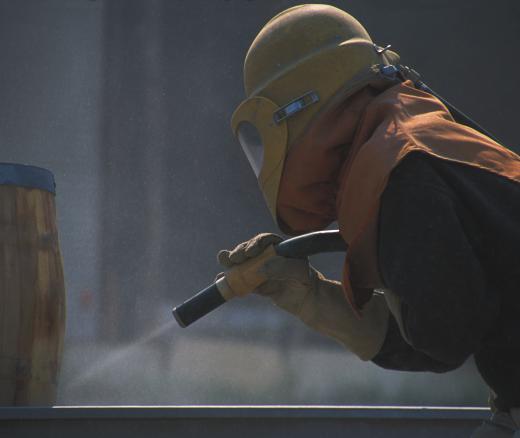A sandblasting enclosure is a type of contained space that makes it possible to use sandblasting to remove topical agents from the surface of different types of objects. Enclosures of this type are sometimes used in manufacturing settings and are considered more or less permanent. Other sandblasting enclosures are portable and can be set up for short-term use at construction sites and other environments on an as-needed basis. With any application, the purpose of the enclosure is to contain the dust and other particles that are freed into the surrounding air, as well as protect workers who are managing the sandblasting task.
One of the more common examples of a sandblasting enclosure is known as the sandblasting booth. This type of enclosure typically sports viewing windows that allow operators to visually observe what is happening within the chamber. Nozzles that release the flow of sand-like particles at the object being cleaned are controlled using a panel outside the booth proper, allowing the operator to control the flow and frequency of the blasts.

Another common configuration for a sandblasting enclosure is the sandblasting cabinet. This type of enclosure is often a portable design that can be set up on site in a relatively short period of time. Like the booth, the cabinet is equipped to allow outside coordination of the sandblasting activity by means of a control panel. Since the structure is not permanent, the components are often composed of lightweight but durable materials that are capable of withstanding specific levels of pressure.
With any form of sandblasting enclosure, the focus is on preventing contaminants from scattering over a wide area, both during and after the blasting has taken place. During the process, the enclosure prevents sandblasted the particles removed from the object from scattering and possibly causing various types of respiratory and other health issues for anyone in the area. Containing the contaminants released into the air also help to protect bodies of water and land that are in the immediate vicinity from being damaged by those particles.
This is especially important if the sandblasting is being used to remove lead-based paints and other types of contaminants. After the blasting is complete, many sandblasting enclosure designs allow for the efficient collection of those particles, making it easier to dispose of them in a safe and environmentally friendly manner. In many jurisdictions, the use of the enclosures as part of business operations is necessary in order to comply with current local and national environmental regulations.

